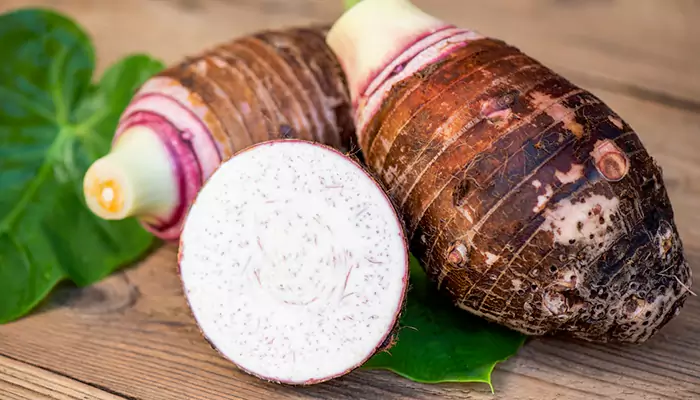Surprising Benefits Of Taro Root
Two main contents of taro roots - resistant starch and high fibre offer a plethora of benefits.
- Ed Powers
- 05 June, 2025
- 2 mins ago

Surprising Benefits Of Taro Root
Two main contents of taro roots - resistant starch and high fibre offer a plethora of benefits.
Originating in Asia, taro roots are now enjoyed all over the world. Mildly sweet in taste with a texture similar to a potato, when cooked, it packs in these surprising benefits.
Fibre And Other Important Nutrients
One cup (132 grams) of cooked taro contains 187 carb-rich calories, and there's less than one gram of protein and fat, each.
Various nutrients that people lack otherwise, like fibre, potassium, magnesium and vitamins C and E are present in it.
May Control Blood Sugar
It contains resistant starch – about 12% in a cooked cup – a special type of starch, that remains unabsorbed in the body and hence doesn't contribute to the blood-sugar levels. The high fibre slows digestion and absorption of other carbs, preventing large blood-sugar spikes after meals. This combo makes it a good carb option — especially for people with diabetes.

May Reduce Risk of Heart Disease
The above-mentioned combo also benefits the heart. One cup of taro root contains more than twice the amount of fibre than a comparable serving of potatoes. Extensive research has shown that people who eat more fibre tend to have lower rates of heart diseases and resistant starch, which lowers cholesterol further reduces the risks of heart diseases.
May Help In Weight Loss
High fibre content — about 6.7 gms in a cooked cup — clubbed with its rich resistant starch content, may increase feelings of fullness. This factor helps in reducing the overall calorie intake while increasing fat burning, potentially leading to weight loss and reduced body fat.
Good for Gut
High amounts of fibre and resistant starch, which the body cannot process goes straight to the gut where they remain in the intestine for a long time. Fibre becomes the fodder for the gut microbes resulting in the healthy growth of good gut bacteria. The more the gut ferments the fibres — and taro root has them aplenty, the more the amounts of short-chain fatty acids that get created. These, then, nourishes the inner lining of the intestine, steadily maintaining their health and strength. This may protect the colon against cancer and inflammatory bowel diseases.
Try Taro
Taro is mostly eaten in the form of thinly sliced, baked or fried chips. One can stream and smash it into a purple puree called Hawaiian poi. There's even a taro tea — a purple-hued drink one can obtain by using only taro or blending it with boba tea. One can cut chunky pieces of taro to make broths, soups, and stews. Sweet cravings can also be fulfilled through desserts made with taro like buns and cakes.










